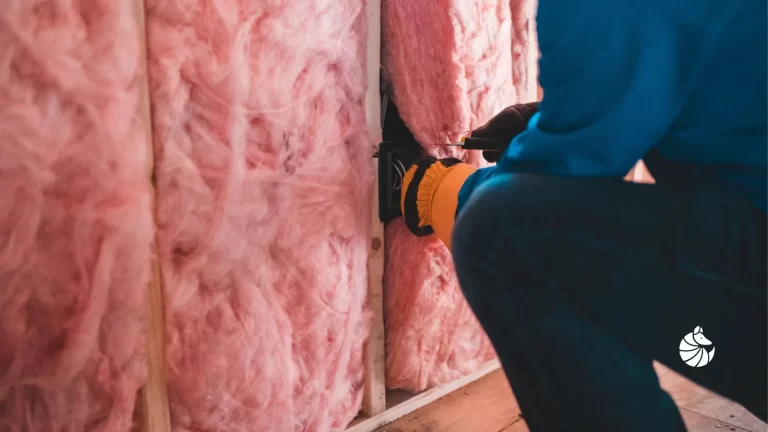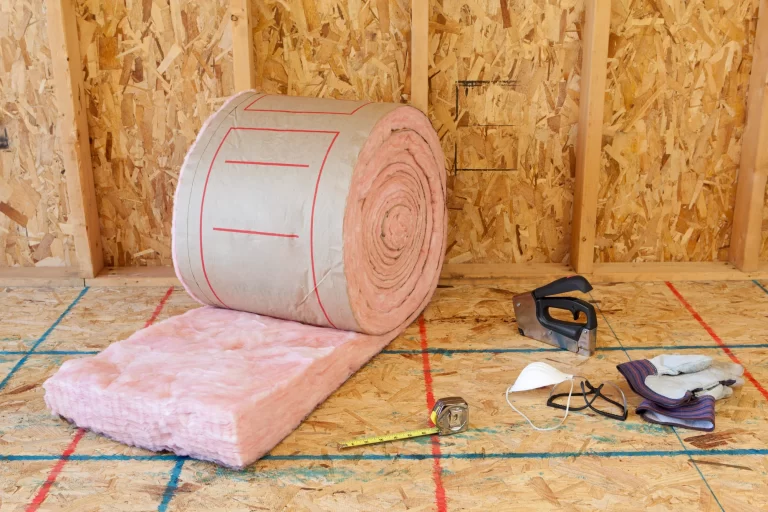How to Insulate Shipping Containers & Shipping Container Homes
Ready to insulate your container? Here are the different ways you can insulate shipping containers used for storage, offices and houses.

Did you know that shipping containers don’t come with insulation? Their corrugated steel walls have no extra padding, so you’ll need to add insulation after you purchase your container.
Why Insulate a Shipping Container?
Climate Control: One of the biggest benefits of insulating shipping containers is climate control. While shipping containers are wind-resistant and water-resistant, they don’t protect against outdoor temperatures. If it’s scorching hot outside, the interior can become unbearably warm. If it’s freezing outside, the inside can get extremely cold. Insulating the container’s interior walls creates a strong barrier against outdoor temperatures, keeping the interior temperature moderate and comfortable.
Moisture Control: Another important reason to insulate shipping containers is moisture control. Uninsulated steel walls can cause condensation. When warm air hits the cold walls, water droplets form, which can lead to problems. If you’re using shipping containers for housing, condensation can damage drywall, rot wood, peel wallpaper, and create mold and mildew. If you’re using containers for storage, condensation can damage the items inside.
Noise Reduction: Insulating a shipping container can also help muffle outdoor noises. For container homes, this means residents won’t be disrupted by neighborhood noise, ensuring peace and quiet inside. This is an important benefit to consider if you plan to build a container home.
If you want to buy a new shipping container and insulate it, check out this straightforward guide on insulation. You’ll learn key information about how to insulate shipping containers, where to place your insulation, and how much the project might cost.
How to Insulate Shipping Containers

When it comes to insulating shipping containers, there’s more than one way to get the job done. You have several materials to choose from, each with its own pros and cons. Here’s a look at three popular options:
Polystyrene Panels
Polystyrene panels, often recognized by the brand name “Styrofoam,” are a simple and cost-effective way to insulate your shipping container. You can either glue the panels directly to the interior walls or mount them against bars flush with the walls. Polystyrene panels are durable, water-resistant, and easy to install.
Pros:
- Cost-effective: One of the cheapest insulation options.
- Durable and Water-resistant: Provides long-lasting protection.
Cons:
- Lower R-Value: Polystyrene panels have a lower R-value compared to other insulation types, meaning they’re less effective at preventing heat flow. This makes them a better choice for storage units rather than living spaces.
Batt Insulation
Batt insulation, also known as “blanket insulation,” consists of pre-cut pieces of woven fiberglass or mineral wool. These materials are non-combustible, making them a good option for creating fire-safe structures. Batt insulation is easy to install and cost-effective, making it a popular choice for shipping container homes and offices.
Pros:
- Fire-safe: Non-combustible materials enhance safety.
- Easy Installation: Quick to install and budget-friendly.
Cons:
- Requires Framing: Needs interior framing for installation, which can add time and cost to your project.
Spray Foam Insulation
Spray foam insulation is a chemical product that expands and hardens when applied to a surface, clinging directly to the walls. It creates a durable, water-resistant coating with a high R-value. While spray foam is more expensive than other insulation types and requires specialized equipment, it offers excellent performance.
Pros:
- High R-Value: Provides superior climate and moisture control.
- Long-lasting and Water-resistant: Durable protection for your container.
Cons:
- Higher Cost: More expensive due to the material and installation process.
- Specialized Equipment Needed: Requires professional installation for the best results.
Best Uses:
- Cold Climates: Ideal for insulating container homes in colder regions.
- Temperature-sensitive Storage: Perfect for storing items like electronics or paper documents that need stable temperatures.
Choosing the Right Insulation
Selecting the right insulation depends on your specific needs and budget. Polystyrene panels are a good option for basic storage, batt insulation works well for homes and offices, and spray foam is best for colder climates or sensitive storage.
If you’re ready to insulate your shipping container, this guide will help you understand the options and decide which material is best for your project.
What is a Vapor Barrier – and Should You Install One?
A vapor barrier is designed to prevent moisture from passing through the walls and affecting the interior of your shipping container. Generally, you’ll want to install a vapor barrier over the insulation to keep things dry and secure inside.
When Do You Need a Vapor Barrier?
Some types of insulation need a vapor barrier to work effectively. For example:
- Batt Insulation: This type requires a vapor barrier to cover it.
- Open-Cell Spray Foam: Also needs a vapor barrier for added protection.
On the other hand, some insulation types don’t need an extra vapor barrier because they act as their own:
- Styrofoam Insulation: Serves as its own vapor barrier.
- Closed-Cell Spray Foam: Also provides its own moisture protection.
Installing the right vapor barrier ensures your container stays dry and your insulation works efficiently, preventing any moisture-related issues inside.
Should You Put Insulation Inside or Outside?
Adding insulation to your shipping container’s interior walls comes with one small drawback: it reduces the interior space. The insulation material, along with any drywall or paneling used to cover it, will shrink the available square footage inside the container by several inches.
Consider Space Reduction Before Purchase
Before you buy your shipping container, think about this reduction in square footage. It might make you consider purchasing a larger container size or shape. For example, a 40ft shipping container provides significantly more space than a 20ft container, even after adding insulation. Similarly, a high-cube container, which is a foot taller than a standard container, gives you a bit more room to work with.
Alternative: External Insulation
If you really don’t want to lose any interior space, you might consider insulating the container from the outside. This involves adding insulation material to the exterior walls and then covering it with intermediate siding and exterior cladding.
Things to Keep in Mind
External insulation requires more time, effort, and money than insulating the interior. Because of this, most container owners opt for internal insulation. However, if preserving the maximum amount of interior space is crucial for your needs, external insulation could be a worthwhile investment.
By weighing these options, you can choose the best approach to insulating your shipping container without sacrificing too much valuable space.
How Much Does It Cost to Insulate a Shipping Container?
The cost of insulating a shipping container depends on several factors:
Size of the Container
The first factor is the size of your container. Naturally, insulating a 40ft shipping container will cost more than insulating a 20ft container due to the larger area that needs coverage.
Climate of Your Location
The climate where your container is located also affects the cost. If you live in a colder region, you’ll need more insulation to keep the interior comfortable. To determine how much insulation you’ll need, check out this R-value map of the United States. It shows the ideal R-value based on your region’s climate.
Type of Insulation
The type of insulation you choose will impact your final cost as well. For example, spray foam insulation typically costs more than polystyrene panels.
General Cost Estimate
As a rough estimate, you can expect to spend between $2,500 and $3,000 to insulate the interior of your shipping container. While this might seem like a significant upfront expense, it can save you money in the long run. Insulating a container home can reduce your energy bills, and insulating a storage container can prevent damage to stored items, saving you from costly repairs or replacements.
Importance of Quality Insulation
It’s important not to cut corners on insulation. Properly insulating your shipping containers will protect them from extreme temperatures, condensation, and outdoor noise. Whether you’re using your container for storage or as a home, adding a layer of insulation is essential.
Investing in good insulation will ensure that your container remains functional and comfortable, no matter the weather conditions.
